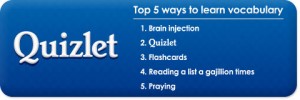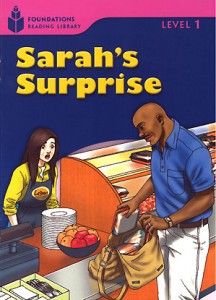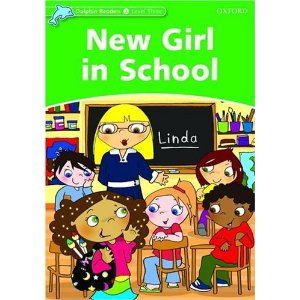business curriculum EFL eikaiwa ES kids language courses Language learning online resources school management self-study teaching vocabulary
by sendaiben
leave a comment
Quizlet may just be what I have been looking for all these years…
For years, I have been looking for a simple, cheap (free?) online tool to allow our younger students to work on their vocabulary outside of class.
Jim George, a friend and fellow school owner, has been going on about Quizlet for a while now, but I didn’t really pay attention until he sent me a detailed email this morning explaining the functionality.
It looks great.
Basically it’s a site that allows people to create and study simple flashcard quizzes online. Free accounts (students) can access content and premium accounts ($15 a year) can create quizzes with words and pictures.
The great thing about it is that as a school we can create study groups and upload content for the students to practice every week. Students can make accounts and join the groups and practice the content for their class. We can also monitor their progress by ‘friending’ them.
It sounds like it has everything we need. I’ll be trying it out over the next few weeks, then I’ll report back with my impressions.
Anyone else use Quizlet?
business curriculum EFL eikaiwa expectations kids language courses Language learning listening school management very young learners
by sendaiben
4 comments
Teaching English to very young children
The other day I was idly watching one of our teachers working with a couple of our students: two sisters, three and one and a half, who have a play style class with a teacher while their mum has a private lesson with another teacher.
I have to admit, I have always been fairly sceptical about teaching very young children in an EFL context. I’m sure it can’t do any harm, but I hadn’t really seen much benefit either. Basically if the parents were happy to pay us to play with their children for 40 minutes a week, and the children enjoyed it, no problem. It wasn’t something we advertised, but we did consider special requests.
However, about halfway through the class I saw something that completely challenged my assumptions.
The two students rarely speak English, beyond ‘hello’ and ‘see you’ at the beginning and end of the class. Their teacher only uses English with them, and they talk to him in Japanese. The ‘class’ consists of playing together with a variety of toys and objects we have in the classroom. The children decide what to play with, and how they want to play, but we manage that by adding or removing toys.
The teacher was playing with a doll, making it sit down or walk around. At one point, the older sister asked in Japanese “Why is the doll sitting down?”, to which the teacher replied in English “Her legs are tired.” The students then said in Japanese, without missing a beat and completely naturally “Oh, her legs are tired. I see.”
I almost fell off my chair.
The student didn’t have enough to be able to guess that meaning from the context. The teacher did not use any gestures or indicate the doll’s legs. She clearly understood what he said.
I think I’m going to have to rethink the very young learners thing…
curriculum EFL eikaiwa ES extensive reading Foundations Reading Library kids language courses Language learning readers Reading Review reviews school management
by sendaiben
4 comments
Foundations Reading Library
Until now I’ve been focusing on phonics and basic readers. Today I’d like to go to the other extreme and look at a series that bridges the gap between children’s readers and ones aimed at older learners.
The Foundations Reading Library, co-authored by my friend Rob Waring, was revolutionary when it came out. A reader series aimed at teenagers, with minimal headword counts that nevertheless succeeded in being interesting and accessible? I don’t know of any others.
Level one starts with just 50 headwords, so normal junior high school students can have a go at getting through the books. For our students who have come up through phonics and children’s readers, these books are cake.
Foundations Reading Library books are available singly, in level packs, and also in collected anthologies. I only just discovered the latter ones, and they seem fairly promising. They have all the books from that level in one volume, cost about half as much as buying them individually, but have the drawback that you can’t give each book to a different student. The covers also seems flimsier and I’m worried about how well they will last. Still, for some teaching situations, they might be a cheap way to stock up.
You can also get CDs and lesson planners for all the levels, but I don’t have much experience with these.
My thoughts:
1. some of the books are better than others, but overall this series is extremely accessible and interesting for students from elementary school all the way to adults. I also use them with university students and they often come out as the most popular series at low level
2. the gaps between levels are very small, making it easy to progress from one to the next
3. the recurring characters are constant through the series and readers can really get to know them
4. there are nowhere near enough books at each level, and unfortunately there won’t be any new ones coming out
Basically, these books still occupy a fairly unique niche, and they do their job extremely well. I wish there were more of them. Some similar alternatives include the Building Blocks Library, by MPI, and the Page Turners series by Cengage, but they aren’t exactly the same…
Anyone else use Foundations? Did I miss anything?
curriculum Dolphin Readers EFL eikaiwa ES kids language courses Language learning readers Reading Review reviews school management teaching
by sendaiben
2 comments
Dolphin Readers
Dolphin Readers, published by OUP, are strange beasts. I almost didn’t include them in my roundup, because I don’t think they actually are, strictly speaking, readers.
Rather, they are extremely well put-together supplementary workbooks. They consist of five levels (starter and one to four) and there are eight books at each level. The series is available as a set, or individually. There is also a version that includes CDs, although I haven’t heard them so can’t comment.
Each book has two parts, the text and the questions/exercises. You could conceivably try to just use them as readers, but the questions are so well integrated that I think it would be difficult to do that.
My thoughts on Dolphin Readers:
1. the books are very well-designed, printed on thick paper and with attractive artwork
2. they are fairly reasonable: just over 600 yen on Amazon.jp, and less than 20,000 for the full pack of 40
3. the exercises are very well-integrated with the text and practice vocabulary and grammar in a very student-friendly way
4. our students and staff both like the books
Where this series shines is in the classroom. I think the books are designed to be bought by students and used as workbooks in class or for homework. For us, that could get kind of pricey and we already have our students buy a lot of supplementary material, so instead we use the readers in class as a teacher-led exercise where students read the text and answer the questions orally. It’s a great filler activity for those extra three to five minutes that crop up occasionally.
Many people I have talked to prefer the upper levels (three and above), and I agree that they are perhaps more interesting, but I have found all of the books useful. It’s a great resource to have in the classroom.
Any other Dolphin Reader users? I’m very interested in hearing how other people use them too.
curriculum eikaiwa ES extensive reading kids language courses readers Reading Review reviews Springboard readers teaching
by sendaiben
2 comments
Springboard readers
Springboard readers are an Australian series, and it shows in some of the content (titles include Wally the Wombat, Kakadu, and Ringo the Dingo). Most of the books are pretty generic though.
The series consists of sixteen levels, each with eight books, with a mix of fictional and non-fictional content. The books are not phonics based, but start off very easy and the progression between levels is fairly gentle, so they are a good place for students to start reading more extensively. The books are available various booksellers in Japan, but Amazon does not seem to carry them. Each set of eight books is priced at 2,100 yen, so they are not the cheapest option.
My take:
1. the content is okay, although some stories are better than others
2. the artwork is a mixture of pictures and photographs and is functional
3. there is a wide variety of topics, from stories to factual information
4. the audio for the series is available online, and can be copied by schools
Basically this is a fairly average reader series that does the job. It is not particularly cheap, and the content is functional rather than compelling. However, having the ability to make copies of the CDs for students to take home is a great resource for schools, and elevates the worth of this series considerably. Normally buying the CDs for a reader series raises the cost considerably, but Springboard provides the same functionality for free.
We use these books with JHS students, assigning them one to four books to read at home per week. This is a solid workhorse of a series, and one that is probably worth consideration by schools looking to expand their range of readers or ones looking to provide students with more listening input at home. The sheer range of topics means that students that read all the books get a fairly wide exposure to lots of vocabulary and contexts.




